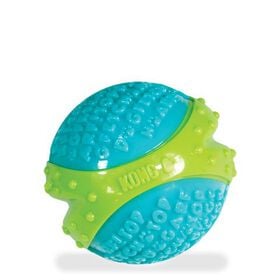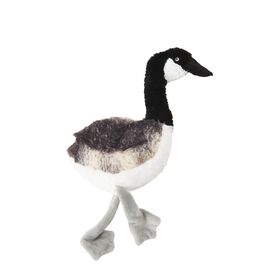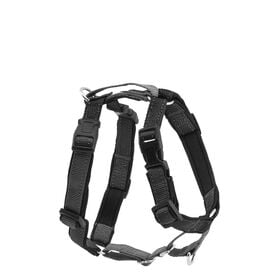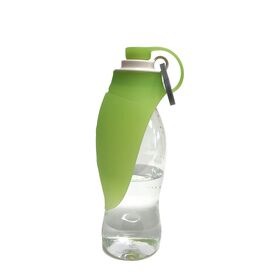The official mascot of the Pi Kappa Alpha fraternity at the University of Virginia, the iconic dog of the Disney classic 101 Dalmatians and firefighter's four-legged companion, the Dalmatian is an easily recognizable breed because of its white coat with black or liver (type of brown) spots. Is this breed of dog for you? Let's find out.
Physical appearance
The Dalmatian is a breed that stands out mainly because of its spots. It is a well-proportioned, energetic, muscular and lively dog. It should never appear coarse or heavy. On the contrary, it should exhibit great endurance at a brisk pace. In terms of size, its ideal height is 53 to 61 cm (19 to 24 in.). The female is generally smaller than the male. Its weight generally ranges from 20 to 32 kg (45 to 70 lbs), but overall balance is of prime importance.
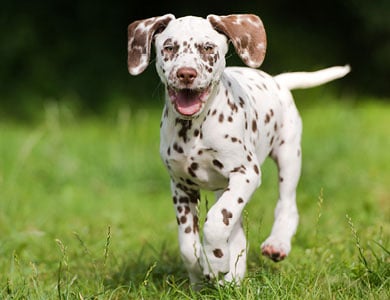
In terms of colour, the Dalmatian must be pure white with black or liver spots. These spots may intermingle or overlap slightly, but should preferably be round, well defined, evenly distributed across the coat and be 1.8 to 3 cm in diameter, ranging from the size of a dime to the size of a two-dollar coin. Although some recessive genes result in Dalmatians having three different colour spots, namely black, liver and beige, this type of marking is a major fault in the breed.
The skull is flat, broader between the ears, with well-defined temples. The eyes, set moderately well apart, are medium-size, round, shiny and clear. The Dalmatian's expression is intelligent and alert, and the eyes should be as dark as possible in black-spotted dogs and light brown to amber in liver-spotted dogs. The ears are of moderate size, fairly wide at the base and gradually tapering to a round tip. They are set rather high, carried close to the head, and are thin and fine in texture.
Life expectancy and health
Despite the various health conditions that can affect the breed, Dalmatians have an average lifespan of 11 to 13 years. Like all breeds, they are prone to specific health problems. The most common include urate bladder stones, the result of a genetic mutation that makes them unable to convert the uric acid formed by breaking down purines into allantoin. They also suffer from liver disease known as copper storage disease (CSD), epilepsy, various allergies, iris sphincter dysplasia, hip dysplasia and congenital deafness (unilateral or bilateral).
Energy level and temperament
All Dalmatians need regular exercise to stay in shape and be happy. These potentially highly energetic dogs can get into mischief if they don't have enough opportunities to do exercise and be intellectually stimulated. A good way to keep them in shape is to throw a
in the yard, take them jogging or cycling, or go for a long hike in the woods. Since the bones and joints of Dalmatian puppies are fragile, it is important to be careful with activities that can cause an impact on joints before the dogs reach maturity.
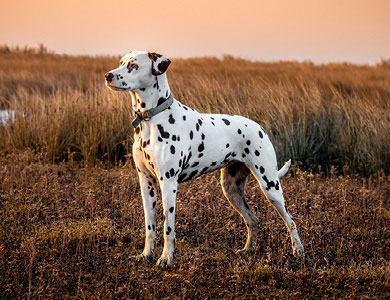
In terms of temperament, Dalmatians are friendly, lively, loyal, generally independent and easy to train. They should not be shy, distrustful, nervous or aggressive. As part of their training, it is very important to expose puppies to as many new and unusual, but also enjoyable, situations as possible. It is also important to teach them how to behave from a very young age. Since these dogs can be very sensitive, it is imperative that you use methods based on positive reinforcement and rewards.
Maintenance and grooming
The Dalmatian's coat is an integral part of its beauty. Little maintenance is required to keep it looking good. Occasional baths and weekly brushing with a horsehair glove or rubber brush to remove dead hair will keep your dog's coat looking its best. Nails should be trimmed at least once a month to prevent foot problems. Because Dalmatians have droopy ears, they should be checked and cleaned regularly to avoid infections. Your breeder and veterinarian can suggest a good routine and cleaning material, and show you how to care for your dog.
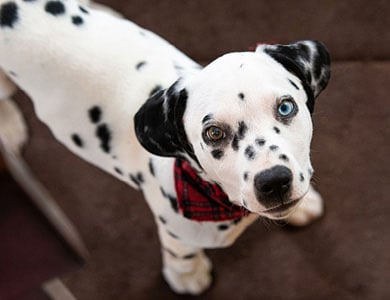
Origins
A number of dog breeds have obscure and controversial origins. Dalmatians are among the breeds with the greatest uncertainty surrounding their origins. Researchers used ancient artifacts and texts to support theories that place the Dalmatian's origins in the British Isles, Europe, North Africa and Asia. The dog's origins can be observed in tables and church chronicles dating from the 16th to 18th centuries. However, it is obvious that, in the early 1800s, the breed was closely associated with a historic coastal region of the Balkans, along the Adriatic Sea, formerly known as Dalmatia. Today, this region is shared by Croatia, which has the largest share, Montenegro, and Bosnia and Herzegovina.
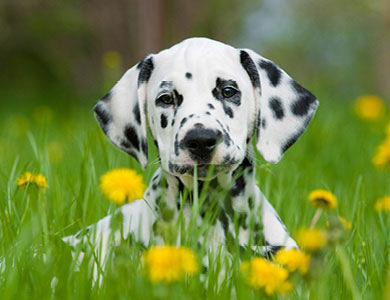
There's no doubt that the Dalmatian's origins and history are as old as those of other breeds. The breed was used to perform various tasks. They were used as war dogs, sentinels at the border of Dalmatia and Croatia, draft dogs and shepherds, and rat and vermin exterminators on farms. In the 1800s, when horses pulled fire trucks, Dalmatians began their long association with firefighters. Over the years, given their intelligence and desire, Dalmatians have played practically every role given to dogs. The most important of the Dalmatian's talents was its status as the original coach dog. The imaginative might say that its days as a coach dog go back to engravings that depict a spotted dog following an Egyptian chariot. It
For more information, contact a registered breeder at the Canadian Kennel Club, who can answer all your questions. You can also contact the organization for more information on breeders and various breed clubs in Quebec and elsewhere in Canada.


